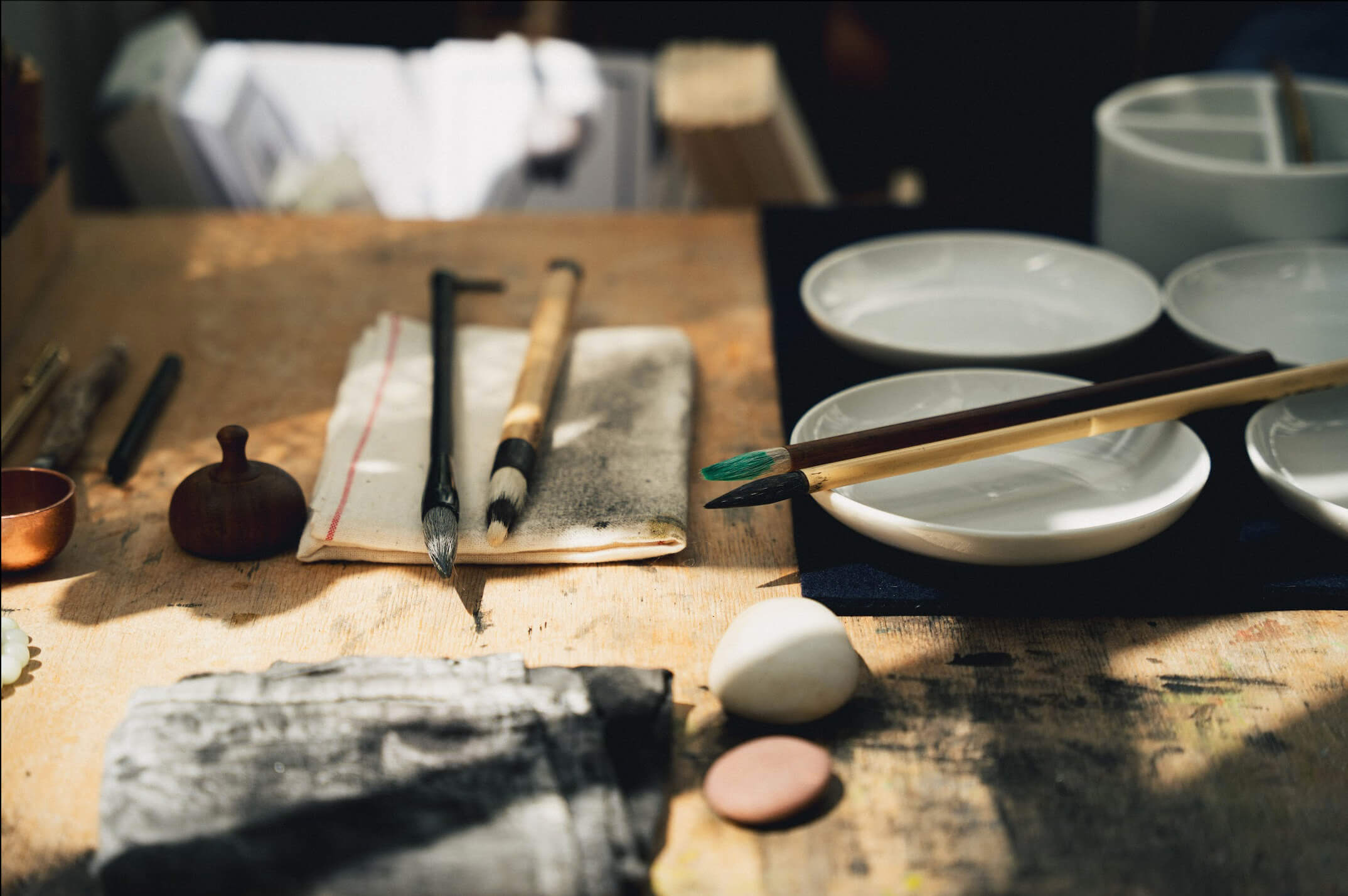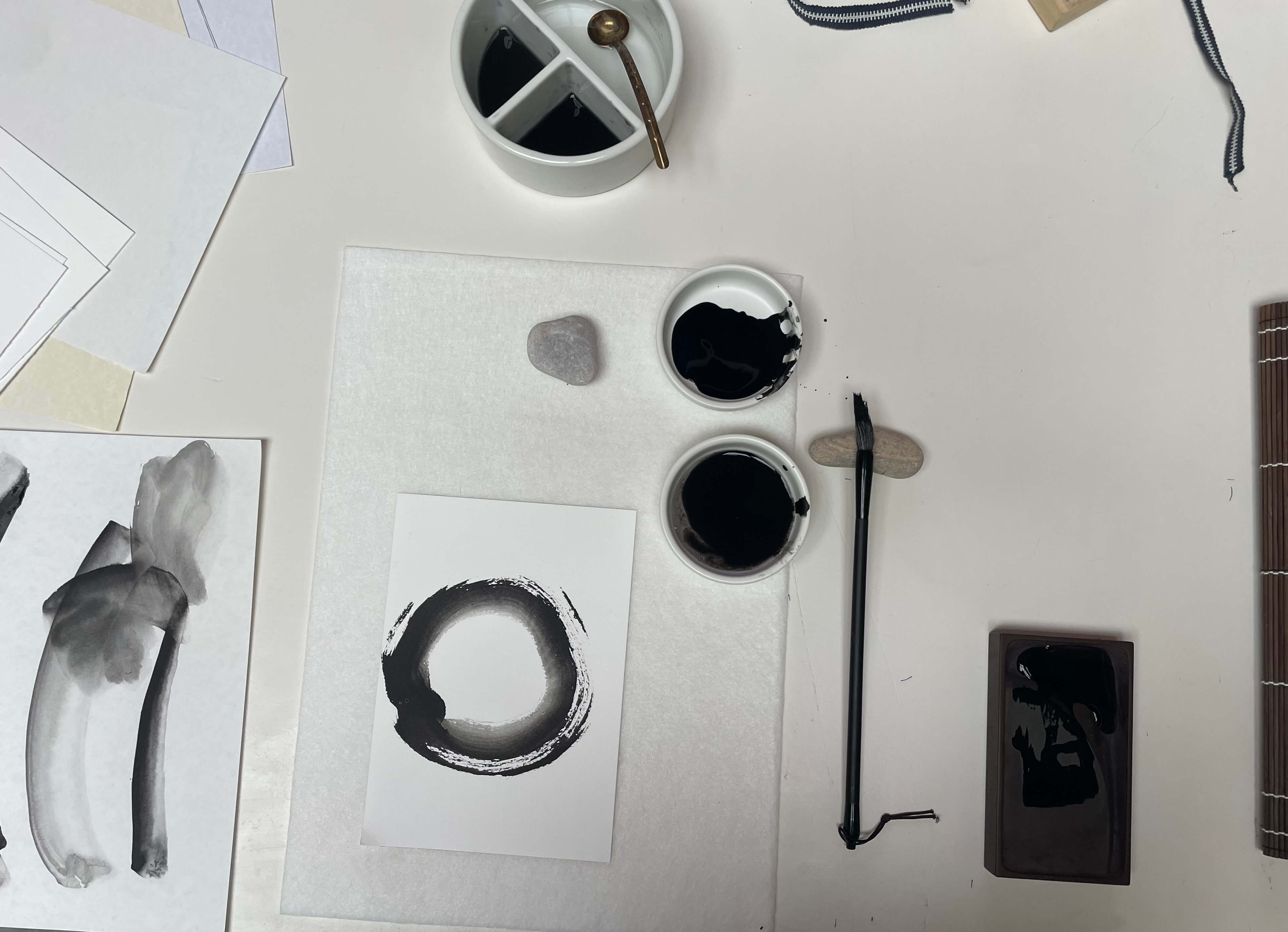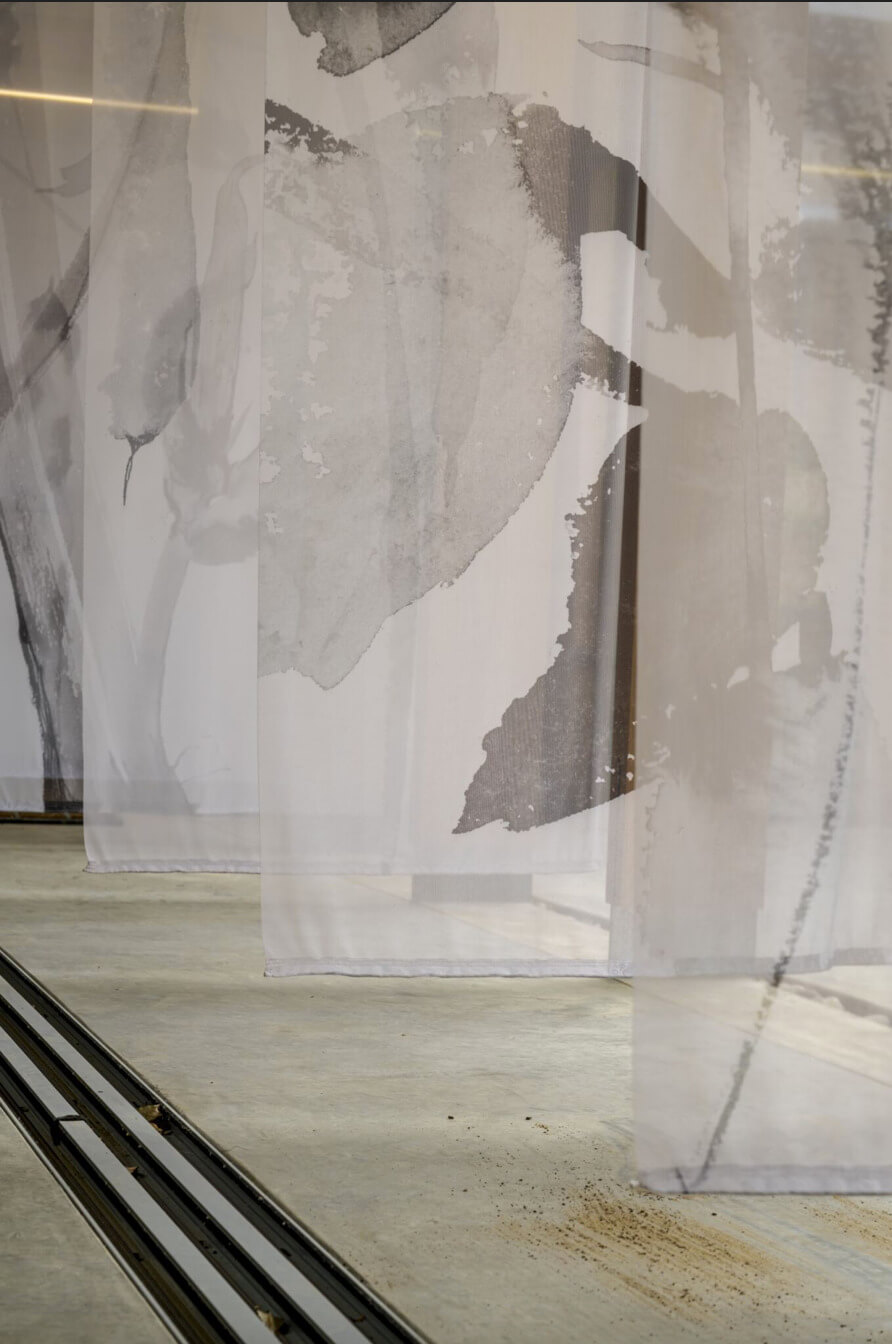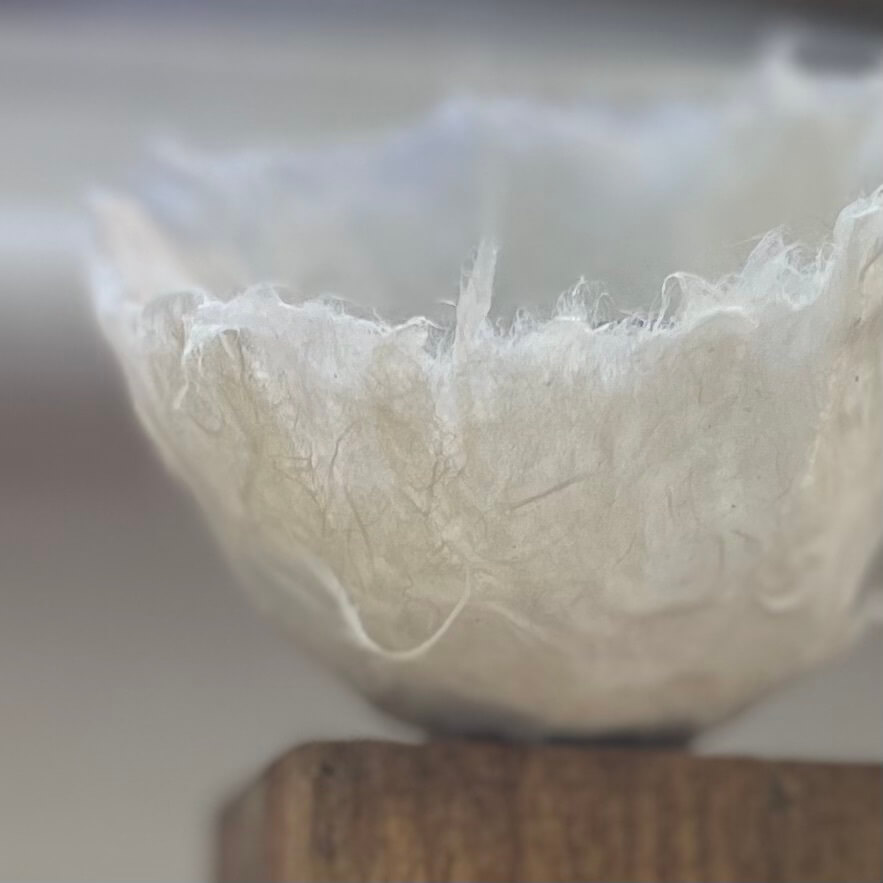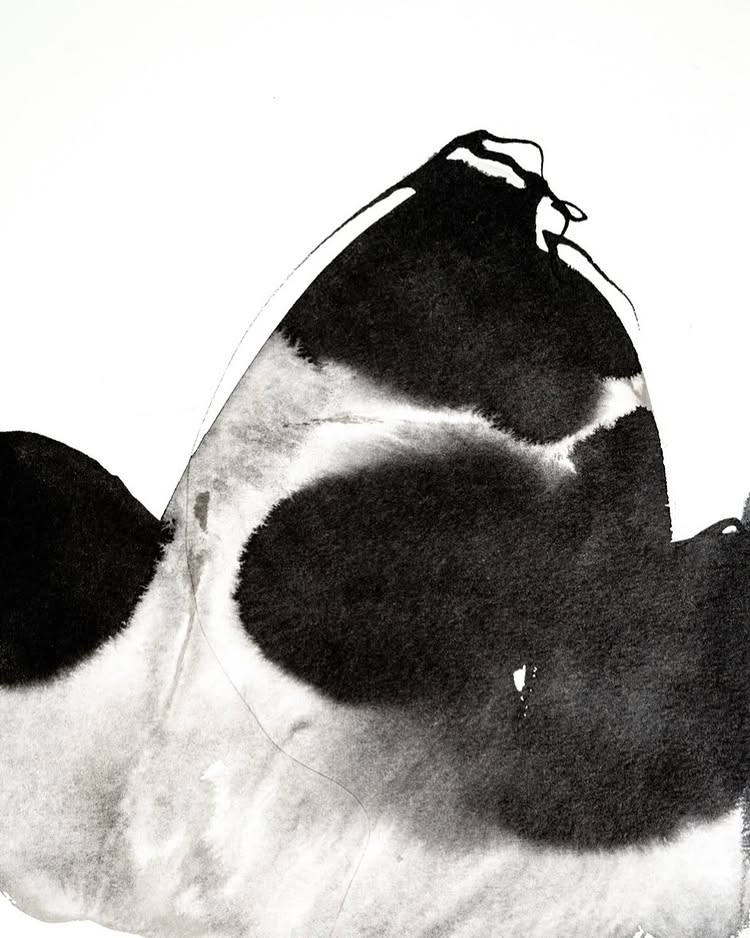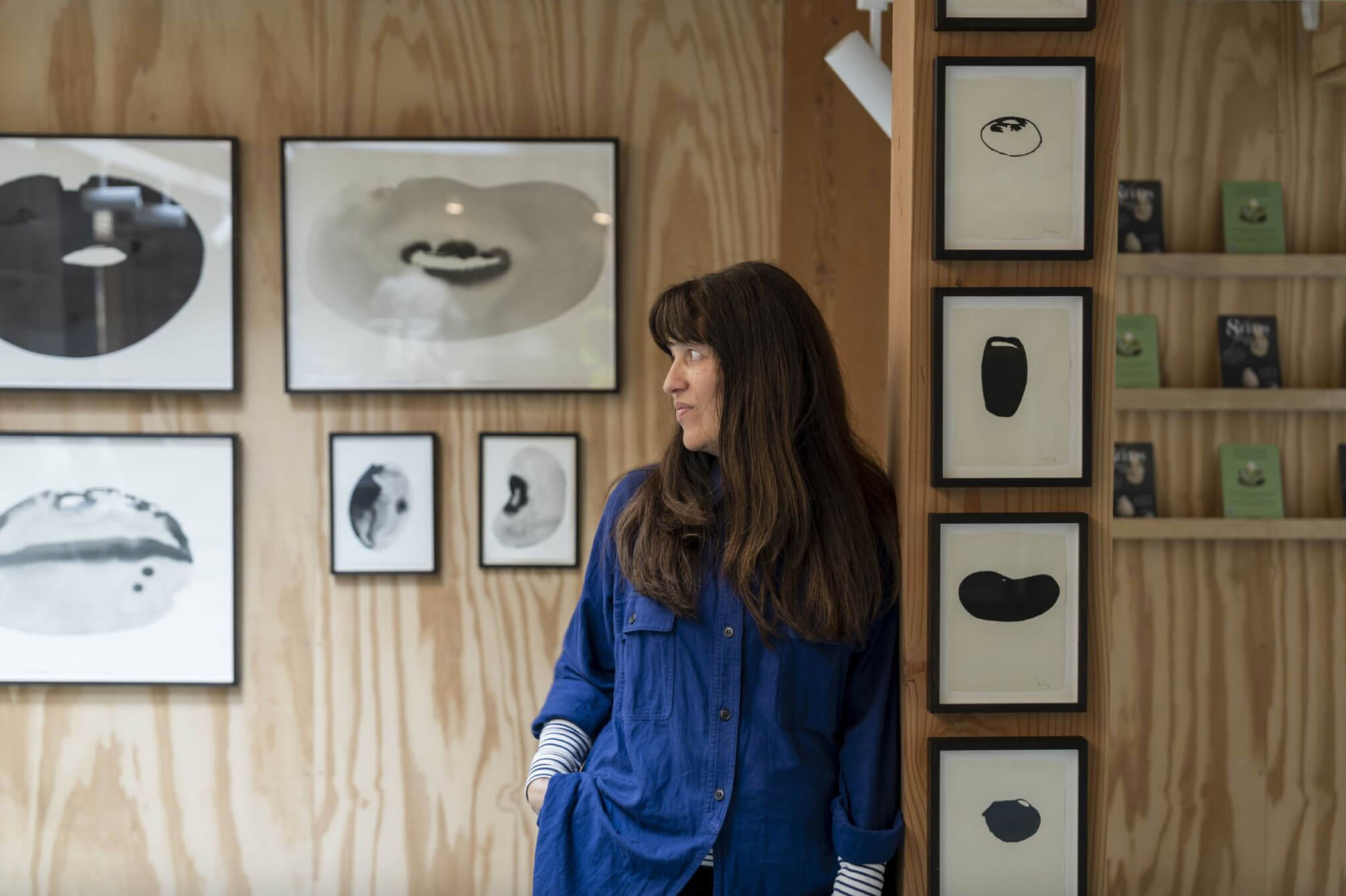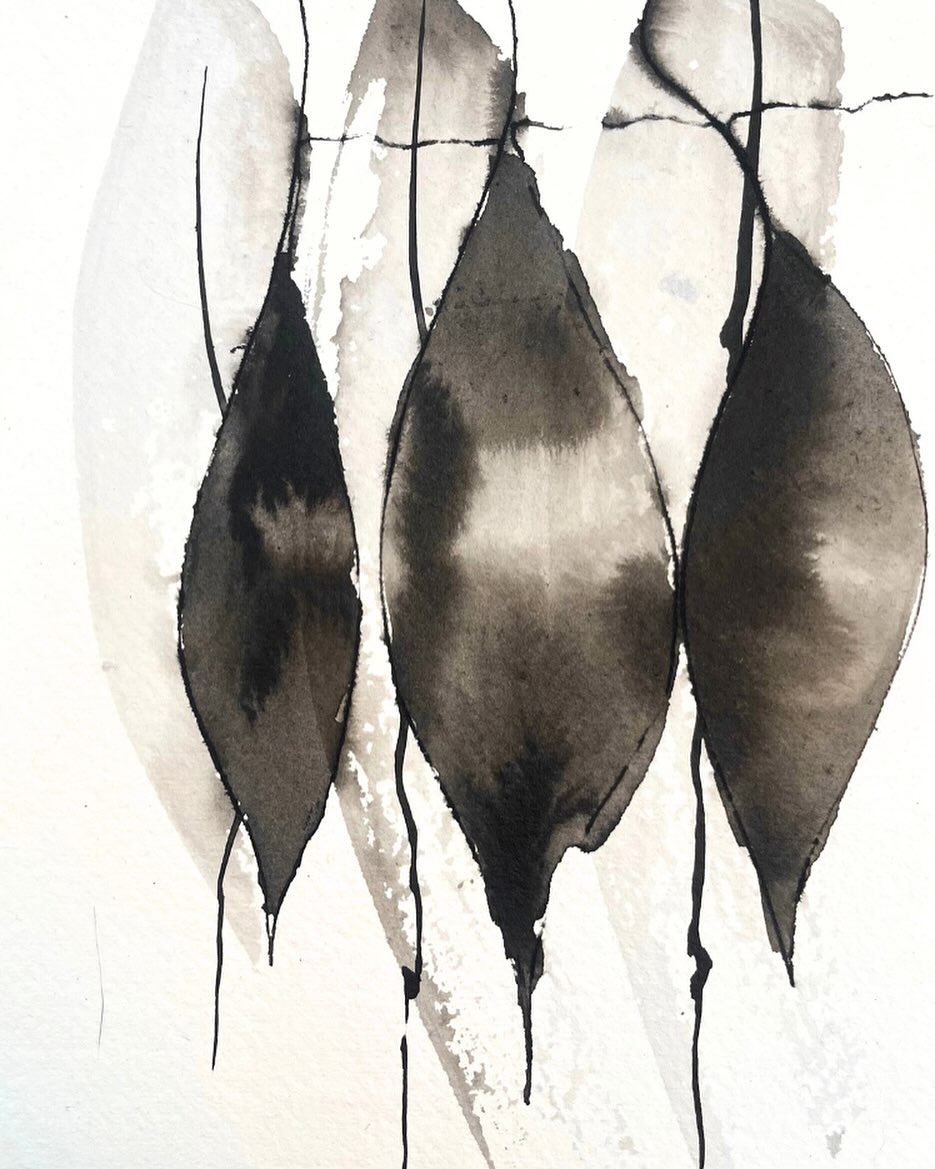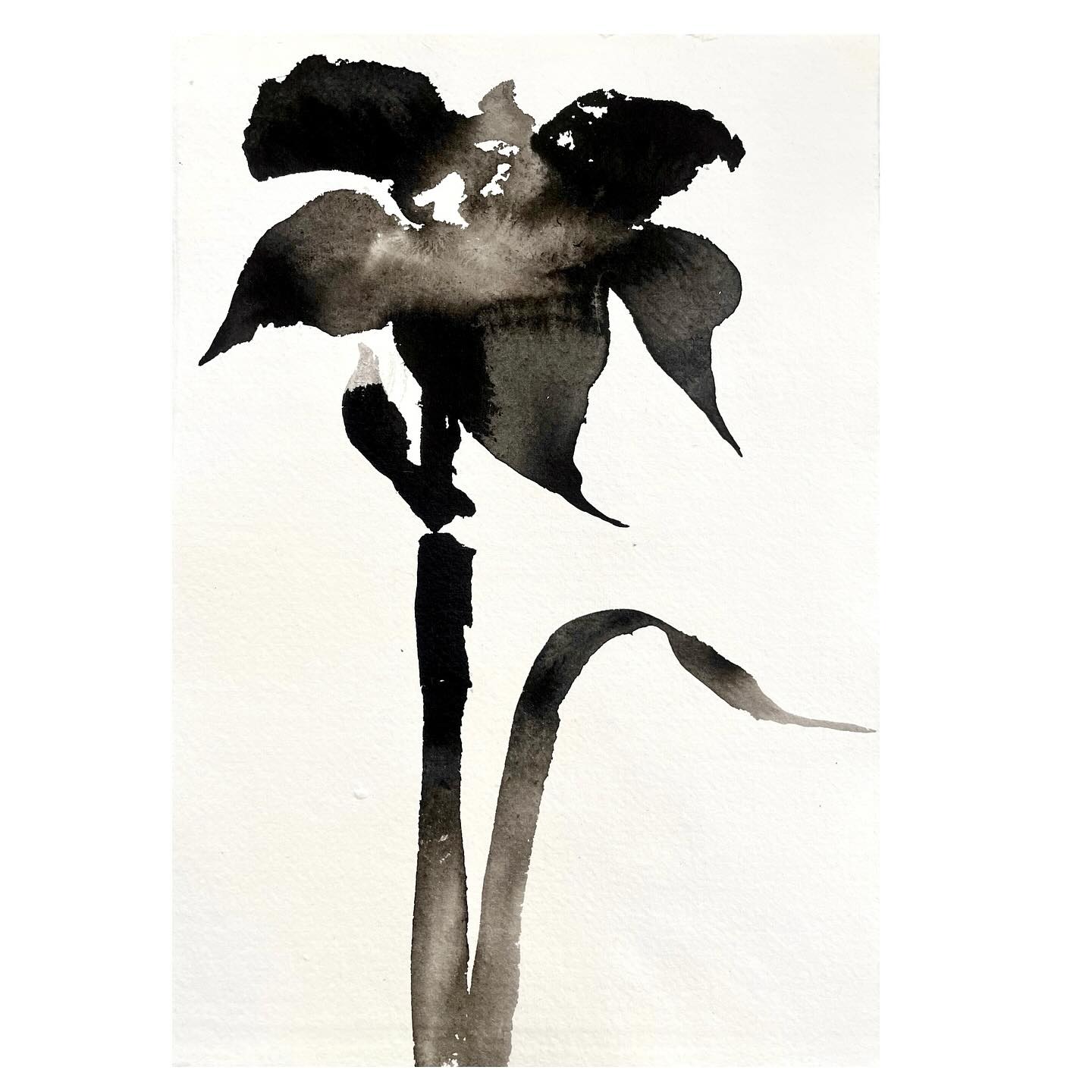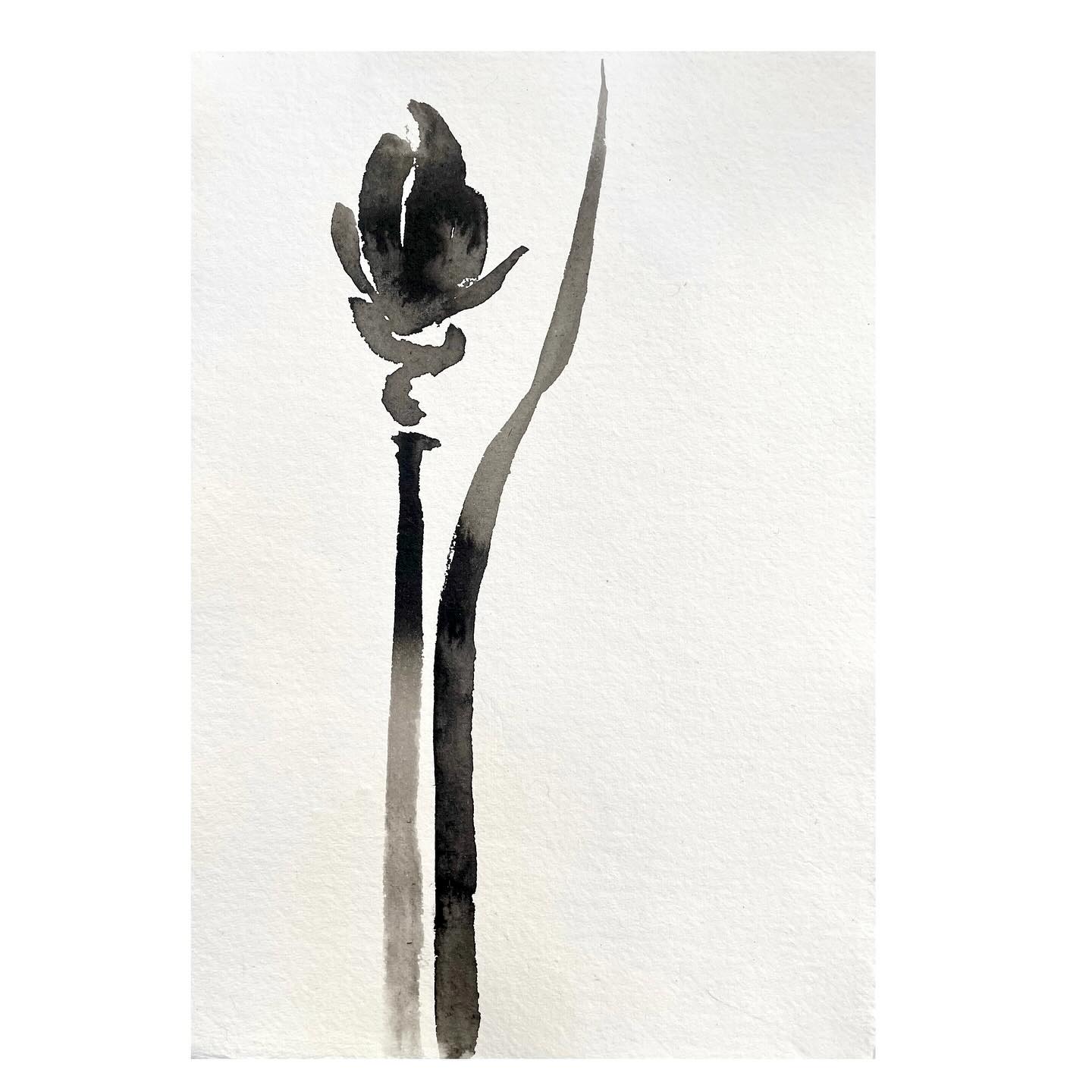VIVIENNE SCHADINSKY
Vivienne Schadinsky creates environmental storytelling through delicate Japanese ink paintings and calligraphic interpretations, handmade paper sculptures, and evocative films that speak of food, nature, and resilience. Her work begins in nature and ends in conversation, whether that’s through a bean, a brushstroke, or a story shared across a postcard. Drawing from Japanese philosophies, research into micro-seasons, and a deep belief in sustainable futures, Schadinsky’s work explores the ways we can reconnect with the land, each other, and the nourishment that surrounds us.
From winning a Cultural Award in Japan for her painting of a soybean to exhibiting with the UN-linked OmVed Gardens, Vivienne’s art bridges aesthetics, activism, and ancestral knowledge. Her practice is layered, and deeply felt; a process rooted in intuition, memory, and climate care.
CONVERSATION
Current Work
How would you describe your artistic practice in a few words?
My practice is really a six-step process. It begins with nature, even before the research, by connecting to a specific place or season. Then I move into scientific research and collaboration, often working with my advisory board. I experiment with materials like Japanese ink, natural pigments, minerals, and handmade papers. Then comes reflection and iteration, where gathered materials become something else entirely, distilled into intuition and energy.
Eventually, all of this becomes environmental storytelling. That’s mostly through Sumi-e ink painting, paper sculptures, and films. Finally, I always take a long view by creating a narrative that preserves knowledge, invites dialogue, and imagines a more sustainable future.
What themes or ideas are central to your work right now?
At the moment, I’m continuing to develop my Foods projects - endangered foods and future foods which started several years ago. I began by looking at endangered food plants and moved toward food resilience, asking what crops will thrive despite extreme weather or global shifts.
This year, I focused on my solo exhibition at OmVed Gardens - Into The Seeds of Time - that came out of my annual artist residency in that wonderful unique urban garden and sustainability hub , and longevity foods, particularly from Japan, that nourish both people and the planet.
I'm fascinated by food systems in longevity regions like Nagano and Okinawa, and how lifestyle, climate, and biodiversity all connect. These themes link into larger ideas of food security, sustainability, and how we might adapt and thrive.
Are there any projects or exhibitions you're currently working on that you’re excited about?
Yes. Some of the work from Into the Seeds of Time and related films will be shown at the Bean Summit at the Barbican this November, hosted by the Food Foundation with OmVed Gardens. It’s an exciting collaboration with chefs, MPs, and changemakers, all coming together around food systems and policy. These are the kinds of platforms I really value.
I’m also collaborating with a jazz duo, Ribbons - Sara Colman and Rebecca Nash - for their album launch at World Heartbeat. They chose one of my Symbiocene paintings for the cover, and I’ll be revealing the original paintings in that series and creating postcards and art prints. It’s a new kind of project for me, but I love these kinds of multi-format, collaborative experiences.
Anything that inspires you in particular?
Japanese culture and materials have shaped everything. I use Japanese Sumi ink, paper, and brushes, and I’ve visited the makers behind each one. Seeing the land where the paper grows and meeting the families who craft the tools means that every material I use carries intention.
Beyond that, I’m deeply inspired by the seasons, especially the 72 Japanese micro-seasons. They create a rhythm that anchors my work and lets me slow down. I’ve also been inspired by philosophies around animism - the belief that there are spirits in nature - and by stories that challenge how we live and eat today.
Developing Into the Seeds of Time with the OmVed team was also incredibly inspiring. I’m deeply grateful for everyone’s knowledge and contributions around seeds, gardens, and food, and for curator Sol Polo, who orchestrated a vast amount of work and research into a beautiful exhibition that unfolded across several buildings at OmVed Gardens.
Exploring your identity
How would you define your visual or brand identity?
My identity is rooted in memory and shaped through intuition. I often describe my work as art with a narrative. It’s visual, of course, it holds a deeper story as it is the mind before and the brush after - having the work well in mind before picking up the brush, whether that’s a forgotten seed, a moment of connection, or a question about how we live.
Are there particular values, moods, or stories you aim to convey through how you present your work?
Yes. I want to create work that feels intimate and generous, and that offers space for reflection, dialogue, and even action. Accessibility matters to me, not just visually, but emotionally and intellectually. I want people to feel that they can engage, even if the topics are complex.
How you bring your artistic identity to life
How do you express your identity in how your work is presented?
I love combining exhibitions with workshops, talks, and participatory formats. At OmVed Gardens, we had recipe cards where people could share stories and reflections. These small touches matter; they invite the audience to step into the work, not just look at it.
I’m also developing a publishing strand of my practice, What the Silence Grew, and started with a zine this summer. I’ve been updating my website, writing more, and exploring how to create content that supports deeper engagement. Education is a big part of what I do, and I’m interested in how to teach sustainability through art.
Have any of those elements become signature to your practice?
Definitely. The Japanese ink work is at the heart of what I do, with its monochrome delicacy and evanescent quality. There’s also a tactile, sensory thread that runs through all my work, whether that’s the feel of paper, the taste of beans or the energy of a story shared in conversation.
And I think this commitment to narrative, to creating thoughtful experiences, has become central too. Whether it's a postcard, a film, or a workshop, it all builds one world.
Looking ahead
What’s your next big focus or direction?
I want to build something more long-term. I’m currently in discussions about gallery representation and future exhibitions. Beyond that, I’d like to create interactive, ongoing resources.
I’m envisioning a Future Food Atlas that maps resilient food systems, and a Longevity Garden that highlights foods that nourish both people and the planet. I’d also like to develop a formal toolkit on how to teach sustainability through art, building on the educational work I’ve done in recent years.
Is there something you’d love to do more of creatively?
I’d love to return more fully to painting. I’ve been so immersed in research and exhibitions recently, and now I want to return to the studio and create.
I’d also love to collaborate more with composers and filmmakers. Ideally, I would pair every painting with music, and create full sensory experiences where sound, image, and story flow together. I’m looking for ways to keep the work alive: to keep growing, deepening, and inviting people in.
published in October 2025
www.vivienneschadinsky.cominstagram
